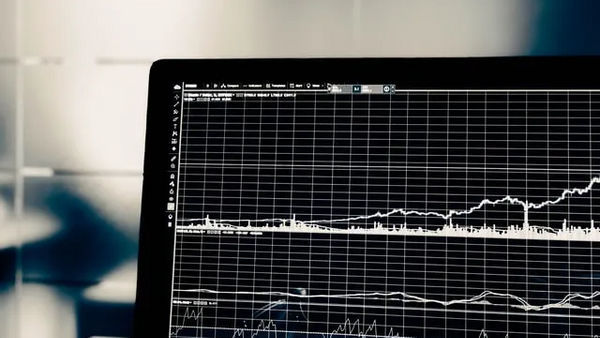Zimbabwe, the South African country with an inflation problem, is taking drastic measures to give it’s economy a fillip. On Monday, the country’s central bank hiked interest rates to an all-time high, and the government formally reinstated the US dollar as a legal currency in order to curb rising inflation and stabilise the country’s plummeting exchange rate.
Also Read| Impact of US Feds’ biggest rate hike since 1994 on India
Surging commodity prices caused by the Russia-Ukraine war, as well as the lingering consequences of COVID-19 lockdowns, have added to the pressure on Zimbabwe’s local currency.
Also Read| How Bitcoin price and inflation are co-related
Governor John Mangudya said in a statement that the monetary policy committee doubled the benchmark rate from 80% to 200%. This puts the total increase this year to 14,000 basis points, the biggest in the world.
Also Read| India inflation down by 0.75%: What it means for consumers
“The monetary policy committee expressed great concern on the recent rise in inflation,” Mangudya said.
“The committee noted that the increase in inflation was undermining consumer demand and confidence and that, if not controlled, it would reverse the significant economic gains achieved over the past two years,” he added.
Also Read| How India can fight ransomware attacks
The impact of the Ukraine war has worsened Zimbabwe’s already shaky economy. Since the invasion began, the price of wheat has been skyrocketing internationally since Russia and Ukraine sell around a quarter of the world’s wheat.
Also Read| Why US inflation is going up and when will it come down
Its ramifications are wreaking havoc on developing countries like Zimbabwe, as shipments of essential goods are hampered by both the war and the sanctions imposed by the West on Russia and some of its allies.
Also Read| Why crypto donations are skyrocketing worldwide: Explained
Zimbabwe relies largely on Eastern nations for commerce, notably Russia, China, Belarus, and Singapore, and imports at least half of its wheat from Russia.
Also Read| Explained: How the crypto landscape has changed in India
Rising fuel and bread costs have caused a wave of price increases for basic goods across the country, exacerbating the situation for many Zimbabweans who are already struggling with widespread poverty as a result of stagnating wages and uncontrolled inflation.
Also Read| Explained: The impact of bond yields on markets and investors
Central banks around the world have unleashed what might be the most severe tightening of monetary policy since the 1980s in order to curb high inflation, avert capital outflows, and currency weakening as investors seek higher yields.
Also Read| Who is the founder of Bitcoin and why is his identity shrouded in mystery?

Reasons behind the inflation in Zimbabwe?
Government printing money in response to:
High national debt
The decline in economic output
The decline in export earnings
Price controls exacerbate shortages
Lack of confidence in government and economy
Also Read| 5 reasons why Indian rupee had a great fall
Since the mid-1960s, Zimbabwe has experienced tremendous inflation. People were accustomed to anticipating more inflation. This is then self-fulfilling. When individuals anticipate hyperinflation, they demand higher wages and raise prices in anticipation of future inflation.
Also Read| How US Fed rate hike impacts the Indian rupee
The annual inflation rate in Zimbabwe reached 192% in June as food prices more than tripled. Prices have risen due to a dramatic devaluation of the Zimbabwe dollar, which has shed more than two-thirds of its value versus the US dollar this year and is Africa’s worst-performing currency.
Also Read| How inflation affects RBI’s interest rate policy
The government will allow the use of the US dollar for the second time in more than ten years, according to Finance Minister Mthuli Ncube.
Also Read| Why interest rates are being hiked globally?
“Government has clearly stated its intention of maintaining a multi-currency system based on dual use of the US dollar and the Zimbabwe dollar,” said Ncube.
Also Read| Explained: Changes in repo rates and their impact on stock market
“To eliminate speculation and arbitrage based on this issue, the government has decided to embed the multi-currency system and the continued use of the US dollar into law for a period of five years,” Ncube added.
Also Read| Bitcoin logo: Who designed it, know its history
The central bank also announced a hike in deposit rates to 40% from 12.5% and the launching of gold coins as an alternate store of value. Mangudya said the coins, which will be minted by the state-owned Fidelity Gold Refineries Ltd., will be traded via banking channels.
Also Read| Explained: Impact of MPC meeting on stock market
The central bank is also working on plans to establish currency forward pricing, according to Mangudya. Details will be released later.
Also Read| Explained: The impact of bond yields on markets and investors
The measures unveiled represent the most recent effort to address a currency crisis that dates back to 2009 when the Zimbabwe dollar was replaced by the US dollar during a period of hyperinflation. Zimbabwe’s currency was reinstated in 2019 and soon began to fall in value.







